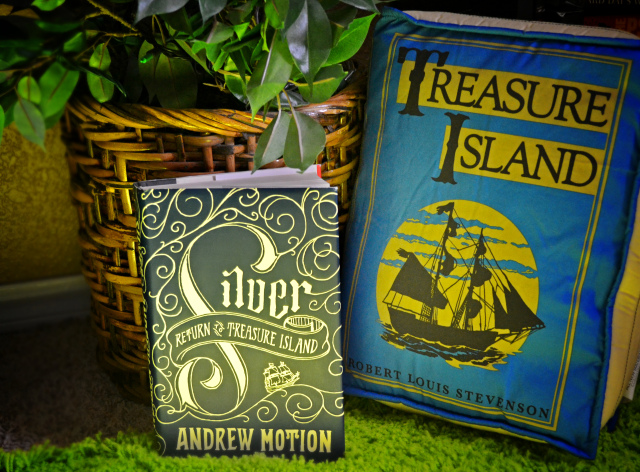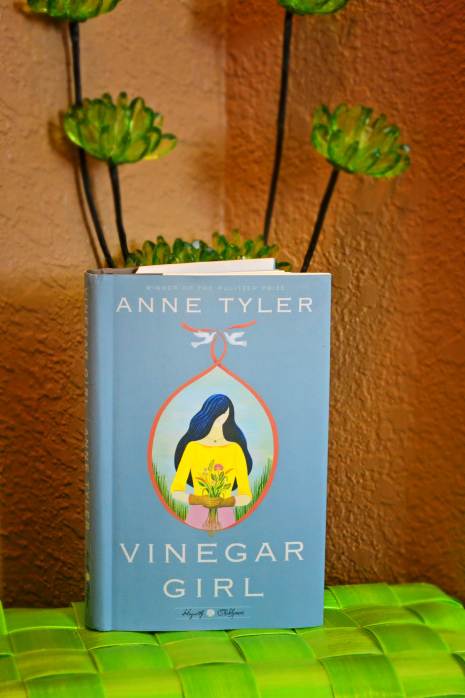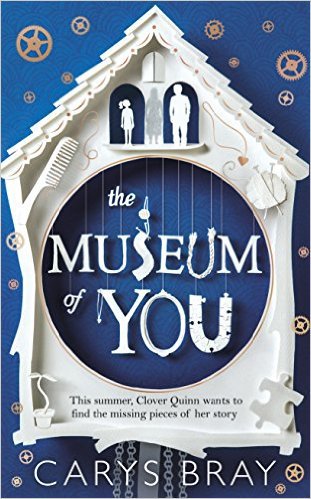It’s the final day of 2017, and I bet you thought my reviews were done for the year. As it turns out, I had time over the long holiday break to read not one but two final books! Some time ago, I posted about Fun New Ways to Read the Classics. Both of my final reviews are adaptations of two classic works of literature. First, we have Silver, Andrew Motion’s sequel to Treasure Island.I fell in love the original classic by Robert Louis Stevenson so I couldn’t resist the opportunity to read this one. My final 2017 review is Vinegar Girl, a contemporary retelling of Shakespeare’s The Taming of the Shrew. Both works surprised me, and I ended up loving one but not caring so much for the other.
52. Silver: Return to Treasure Island by Andrew Motion
Since Treasure Island holds a special place for me, I was initially apprehensive regarding Andrew Motion’s sequel. Trying to continue a work of classic literature strikes me as a rather daunting task. Fortunately, I really enjoyed Silver as it can be enjoyed both as a continuation or as its own standalone story. Motion sets his novel nearly forty years after the conclusion of the Stevenson classic and centers on the children of Jim Hawkins and Long John Silver. Setting up the story as a next generation tale allowed Motion the freedom to create his own story while still addressing loose ends left in the original.
When the story opens, Jim Hawkins now runs an inn on the English coast with his son Jim. The two have a very turbulent relationship, and young Jim tries to balance being a good son with also having a wild and adventurous side. His father as fallen into obscurity and often regales locals with tales of his boyhood adventures. One night, Jim is visited by Natalie (Natty) Silver, daughter to the infamous Long John Silver. She gives Jim an interesting proposal: the two should return to Treasure Island to claim the remainder of the fabled treasure and finish their fathers’ work. The journey won’t be an easy one as the two must battle murderous pirates, deception, and dangers lurking in every corner.
Once the story gets rolling, Silver is a very entertaining read. There’s no need to have read the original classic, but if you have it is quite rewarding. Motion fleshes out little details such as Long John Silver’s wife as well as the fates of those left behind on the island decades before. Once Jim and Natty start sailing, it’s basically one adventure after the next. The other characters in the story are interesting as well, and I loved the nod to the original author by naming one the crew “Stevenson.” I thought this story would be fairly predictable, but I was definitely surprised by how events get resolved.
The book definitely had some flaws for me. In the beginning, a lot of emphasis is placed on the turbulent relationship Jim has with his father. In fact, one of the themes of the story is coming out of the shadow of your father and becoming your own person. I think there was room for Jim to develop more as a character, besides just falling in love with Natty. As it turns out, the daughter of Long John Silver ended up being the more interesting character. We get one chapter told from her point-of-view during a period where she and Jim were separated. Natty struggles with reconciling the kind and feeble old man she knows as her father with the infamous criminal that appears in all the legends. I actually think this novel would have been fantastic if told entirely with Natty as narrator. It was nice to see the inclusion of a strong female lead in a sequel that was strictly a boy’s adventure tale.
“Everything told me that I was leaving, that my boyhood was slipping behind me, and that I was choosing the terms of my own existence.”53. Vinegar Girl by Anne Tyler

Reading this contemporary take on a classic Shakespeare play was a different experience entirely. I’ve never read the original The Taming of the Shrew, so can really only base Anne Tyler’s retelling on its own merits. In the original play, Katherina is the “shrew” of the title who is deemed unworthy of marriage because of her assertive and strong-willed nature. Her younger sister Bianca has a long line of suitors, but her father forbids it until the older daughter is married. Thus, a scheme is devised to “tame” Katherina(with hilarious results apparently). There have been several adaptations made over the years, two of the most popular being the musical Kiss Me Kate and the film 10 Things I Hate About You.
Vinegar Girl is part of the Hogarth Shakespeare range, in which well-known writers adapt their favorite Shakespeare plays into new novels.I loved Jeanette Winterson’s The Gap of Time, her brilliant retelling of A Winter’s Tale. While I like the ideas put forth in Tyler’s novel, I felt like it ultimately fell a bit flat at the end.
Kate Battista is at a difficult crossroads in her life. After getting kicked out of college for standing up to one of her professors, she couldn’t be more ill-suited to her job as a preschool teacher’s assistant. Kate lives with her father, an absent-minded microbiology researcher, and her popular yet sullen younger sister “Bunny.” After getting into trouble for her bluntness, Kate is trying to practice filtering her thoughts. She reflects that “the unsatisfying thing about practicing restraint was that nobody knew you were practicing it.” When her father’s valued assistant faces deportation, he comes up with a great idea to have him marry Kate. After all, she has no prospects due to her stubborn and awkward nature. While at first, she is repulsed by the idea of “human trafficking,” she begins to lean towards the idea out of her fears that she will end up alone.
This is the first time I’ve read anything by Anne Tyler. She definitely is good about creating very eccentric characters. The most fascinating aspects of this book were the interactions between Kate and the members of her family. Dr. Battista is quite comical at times, while being utterly annoying at others. Younger sister Bunny comes across as your typical fifteen-year-old. There are some great moments in this novel, where Tyler manages to convey a lot just by a look or a gesture. Since her mother passed away when she was a child, Kate has to take on the responsibilities of caring for her family, such as making the family meal every night (which is always the same dish). Kate is often misunderstood because of her strong-willed and assertive nature, reflected in her imposing physical presence. I loved how Kate’s abundance of hair was used to not only represent her personality but also at times to serve as a shield to her true feelings.
I didn’t really care for Pyotr, the mail suitor of the book. Although there are some funny moments between him and Kate, I thought the jokes regarding language barriers were too much. Honestly, I didn’t feel that Pyotr was the right one for her. Kate belongs in a special class of women. She’s a fierce girl. In the end, I thought some of that fire died out. There’s a famous speech in the concluding moments of the original play, which Tyler modernizes here. It didn’t work for me, and I thought Kate toned it down too much.
As with my first review, there is no need to read the original to enjoy this novel. The best part about reading both of there was that they possessed strong female characters. After all, we can never have enough fierce girls in the world. Never stop running and always keep burning.
“Funny how you have to picture losing a thing before you think you might value it after all.”What do you think about adapting classics? Should we do it or should we leave them alone? Let me know with a comment down below!
Advertisements Share this:





